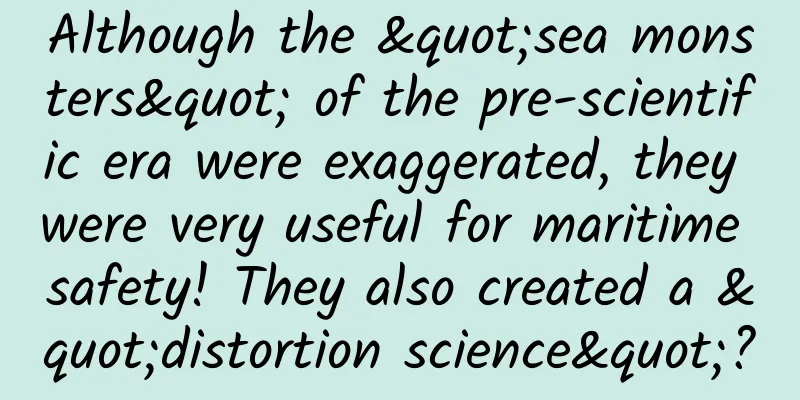Asteroid No. 102536 is named after him.

|
Do you remember? In the 2021 Chinese Poetry Competition Season 6, an octogenarian asked the contestants this question: Which question can the Chang'e project answer? A. May I ask Chang'e, has the laurel in the moon withered and sprinkled on the guest's banner? B. May I ask Chang'e, who planted the Bo Po tree? C. Let’s drink a cup of wine and ask Chang’e, how far is the road to the Moon Palace? At 1:59 a.m. on December 17, 2020, the Chang'e-5 probe returned to Earth with lunar soil samples and landed successfully in the landing area of Siziwang Banner, Inner Mongolia. This was China's first mission to return samples from an extraterrestrial body. In the forward command post dozens of kilometers away from the landing area, it was this old man who insisted on going to the scene in person to "welcome" Chang'e-5. His colleagues kept persuading him to give up. After all, it was deep winter and the temperature in Siziwang Banner was more than 30 degrees below zero, which was too much to bear. Chang'e 5, loaded with lunar soil, returns to Siziwang Banner, Inner Mongolia. Image source: Xinhua News Agency "I have been waiting for this day for 16 years. This is the agreement between Chang'e 5 and me, and it is also my commitment to the motherland. Back then, I promised the central government that China's space program would be divided into three steps. This is the third and final step. This is called having a beginning and an end," the old man said, and recited a poem he had written, "Wait until the Siziwang Banner meeting, and the project will be concluded." He is Luan Enjie, the planner of my country's lunar exploration project and the first commander-in-chief of the project. He is honored as the "watchman" of China's lunar exploration project. As the former director of the National Space Administration and an academician of the Chinese Academy of Engineering, he has been involved in the aerospace industry since he was 20 years old. He has presided over major projects such as submarine-launched missiles, manned space flight, and lunar exploration. When he was nearly 60 years old, he creatively proposed the concept of "big space" and implemented it step by step. He is a well-deserved unparalleled national hero in my country's aerospace field. Top students from prestigious schools emerge In the summer of 1960, Luan Enjie, a 20-year-old student from Baicheng, Jilin, was admitted to the Department of Mechanical and Electrical Engineering of Harbin Institute of Technology, known as the "Cradle of Engineers", with excellent grades. In view of his outstanding performance in middle school, the school let him major in the Department of Automatic Control to reserve talents for the aerospace system of New China. Harbin Institute of Technology, Luan Enjie Photo source: see watermark Luan Enjie quickly became a star in the Department of Automatic Control. He was diligent and inquisitive, and he was quick at answering questions and got high scores in exams. For this reason, the school journal published a special report titled "How Luan Enjie Learns". In his sophomore year, Luan Enjie switched to the major of gyro principle, instrumentation and inertial guidance. This major is a high-end confidentiality subject and is highly valued by the country. Soldiers stand guard during class to prevent information leakage. In this way, the top student Luan Enjie successfully graduated under the "protection" of the soldiers and entered the famous Tsinghua University. In 1968, after obtaining a postgraduate degree in precision instruments from Tsinghua University, Luan Enjie was assigned to the Ministry of Aerospace Industry and began to engage in the research and development of weapons and equipment to reserve energy for his future career in aerospace. Twenty Years of Missile Research In 1970, Luan Enjie, an engineer from the Fourth Academy of Aerospace, took over as the commander-in-chief of China's first submarine-launched missile, the Julang-1. With many years of experience in weapons and rocket development, he knew very well that for China, which had extremely weak basic industries at the time and no information to refer to, how difficult it was to develop submarine-launched missiles. Submarine-to-ground missiles refer to strategic missiles launched from underwater submarines and attacking fixed targets on land through the water surface. There are two difficulties in its development: first, it must be installed on a submarine and its size must be very small, and the conditions for manufacturing small missiles were not available at the time; second, it must ensure that it hits the target on time at a long distance, and it is not possible to bomb it in advance or in advance. Therefore, the Party Central Committee proposed the decision to develop submarine-to-ground missiles in 1967, and it took three years of preparation before it was officially implemented. Luan Enjie was fully aware of the weight of the burden on his shoulders when he was given the task. As a man who was good at taking exams, he regarded the development of submarine-to-ground missiles as an unprecedented test and was determined to study and review hard to submit a satisfactory answer to the Party and the country. After more than a year of research and demonstration, Luan Enjie proposed a three-step plan for submarine-to-ground missiles: platform, tube, and boat. The first step is to simulate the launch from a land launch platform, which is the "platform"; the second step is to simulate the underwater environment and launch through the launch tube, which is the "tube"; the third step is to launch from a submarine in a short distance in real time, which is the "boat". It is a gradual and step-by-step process. According to the "three-step" plan, Luan Enjie organized people to make preparations in all aspects. Due to political movements and backward technology, the first step, the launch pad simulation test, was not carried out until 1980. Unfortunately, the missile exploded shortly after launch and was far from the intended target. Luan Enjie was very sad that his ten years of hard work had gone to waste, and he did not sleep well for several nights. After conducting a large number of ground experiments with his technical staff, he finally completed the first two steps of the plan. Unexpectedly, during a short-range launch from a submarine, the missile lost control after leaving the water and exploded before reaching the target. After two consecutive failures, Luan Enjie was under tremendous pressure. He often woke up in the middle of the night and couldn't sleep, so he simply got up to study the materials. On October 12, 1982, the "Julang-1" was finally launched successfully, marking that my country became the fifth country in the world with the ability to launch nuclear missiles underwater from submarines, and had the ability to launch a second nuclear strike. The road of scientific research never ends. After that, Luan Enjie organized a team to improve the "Julang-1" to meet the needs of national defense science. In 1988, the "Julang-1" was equipped to the troops and officially used for military purposes; in 1990, it was given the need to go ashore and transformed into the "Dongfeng-21", which played a greater role. Luan Enjie naturally took over as the commander-in-chief of the "Dongfeng-21". Missiles are an important part of the aerospace industry and the basis for the development of launch vehicles and artificial satellites. From 1970 to 1990, Luan Enjie devoted himself to the research of missiles for 20 years, laying a solid foundation for the subsequent lunar exploration project and the construction of "big aerospace". A heavy burden at the age of sixty In the autumn of 1998, Luan Enjie, who was appointed as the director of the National Space Administration, received an important event arranged by the bureau: riding on the successful launch of the "Long March 2Fun" (Long March 2 bundled carrier rocket), he officially started the planning and demonstration of the lunar exploration project (lunar exploration project). It turns out that on July 16, 1990, the "Long March 2Fu" high-thrust rocket was successfully launched at the Xichang Satellite Launch Center, which not only marked a new breakthrough in China's launch vehicle technology and launch capabilities, but also indicated that my country has the ability to explore the moon. Industry insiders know that lunar exploration is the first stop in deep space exploration (because the moon is the closest celestial body to the earth), and the lunar exploration project is my country's third important aerospace project after artificial satellites and manned aviation. The first problem to be solved in the lunar control project is the rocket's carrying capacity, because the average distance between the earth and the moon is 380,000 kilometers, which cannot be completed without a high-thrust rocket. At the end of the last century, the main task of the "Long March 2Fu" was to maximize the carrying capacity, and the carrying target was not yet determined. After the successful launch of Xichang, the planning and demonstration of the lunar exploration project was naturally put on the agenda. Knowing its importance, Luan Enjie took on the heavy responsibility again. For more than 2,000 days and nights, he led the team to do a lot of data verification and experimental testing. In November 2000, he presided over the compilation of the white paper "China's Space Program for the 21st Century", which focused on the lunar exploration project as the starting point of outer space research. In January 2004, the country officially launched the lunar exploration project and announced it to the public. The 64-year-old Luan Enjie was appointed as the general commander. The primary goal was to launch a satellite to the moon and obtain a panoramic photo of the moon. He, who always liked literature, wrote a poem in his office: The earth has been cultivated for 60,000 years, and Chang'e has been homesick for 5,000 years. The teachings left by the ruins urge me to think hard, and it is tasteless to waste my sixties. Luan Enjie, the first commander-in-chief of the lunar exploration project. Image source: Military Industry Memory Watching over Chang'e for 16 years Luan Enjie, who is over 60 years old, was ordered to command the lunar exploration project and share the heavy responsibility with the chief designer of the project, Sun Jiadong, who is over 70 years old. Luan Enjie at work. Image source: Military Industry Memory How to gradually advance the lunar exploration project? Luan Enjie combined the "three-step" plan of developing submarine-launched missiles in the early years and divided the lunar exploration project into "three steps": the first step is to use a detection satellite to fly around the moon, which is "orbiting"; the second step is to use a lunar soft lander to land on the lunar surface, which is "landing"; the third step is to use a lunar sample returner to collect soil and bring it back to Earth, which is "returning". This is the "three-step" idea of the lunar exploration project often mentioned in news reports. After deciding on the idea, the next step was to give the lunar exploration project a code name, which would also be the name of subsequent artificial satellites and probes. At the project discussion meeting, everyone gave five or six names, and Luan Enjie preferred "Chang'e". But someone raised objections: "Chang'e has a bad reputation. 'Chang'e should regret stealing the elixir, and her heart is filled with the blue sea and blue sky every night'. The Tang Dynasty poet Li Shangyin criticized her." "Without the plot of stealing the elixir, there would be no romantic story of Chang'e flying to the moon. I think using Chang'e as the code name for the lunar exploration project is in line with the Chinese people's pursuit of romance." The final decision was made, and Luan Enjie insisted. With the idea and the name, the next thing to do was to fully implement the development of the lunar satellite. So he traveled around the research institutes and test sites all year round, and each time he was away for two or three months, leaving all the housework to his wife. Hard work pays off. Under the leadership of Luan Enjie, the lunar exploration project won six victories in six battles, delivering a satisfactory answer to my country's aerospace industry. When the "Chang'e-1" lunar satellite was successfully launched, he and the technicians hugged and cried in the measurement and control center; when the "Chang'e-4" probe landed on the back of the moon and took pictures, he was ecstatic; when the "Chang'e-5" sample returner raised the five-star red flag on the surface of the moon, he was so excited that he couldn't sleep well for several nights. After successfully collecting soil and bringing it back to Earth, he insisted on going to Inner Mongolia to be on site, which led to the touching scene mentioned above of braving the low temperature of minus 30 degrees to go to the landing area in Siziwang Banner... Chang'e 5 spacecraft anatomical diagram Image source: Military Industry Memory From 2004 to 2020, Luan Enjie treated Chang'e as his own child, raising her day by day until she finally shone brightly. He is truly the "watchman" of China's lunar exploration project. Innovative proposal "Big Space" When Luan Enjie took office as director of the National Space Administration in 1998, the administration proposed that while launching the planning and demonstration of the lunar exploration project, it should also gradually carry out space science research. Studying space science means that the aerospace industry must be transformed into the aerospace industry. Because at that time, some developed countries in the world had already used space as a platform for research and realized civilian use, forming an industrialization trend. "When the aerospace industry is transformed into the aerospace industry, artificial satellites will become infrastructure like our highways, power grids, and communication networks, serving the national economic construction and the construction and implementation of a community with a shared future for mankind. This requires that China's aerospace industry must be expanded to full application." Later, when Luan Enjie was interviewed, he briefly introduced the importance and urgency of China's aerospace industry transformation. After comprehensive, thorough and meticulous research, he creatively proposed the concept of "big aerospace". Specifically, it is to conduct space science research upward and explore outer space; to conduct aerospace application research downward, with a focus on military and civilian use, and to serve the national economic construction in terms of communications, navigation, remote sensing, etc. "Big aerospace" expands the original aerospace industry to the four major areas of sea, land, air and space. In order to promote the development of "big aerospace" research, he presided over the compilation of the guiding "China's Space White Paper Facing the 21st Century" in November 2000; in order to refine and implement the 2000 Space White Paper, he presided over the compilation of annual space white papers in 2006, 2011, and 2016... Today, although Luan Enjie, who serves as an expert consultant for Tianwen-1, has retired from the front-line leadership position, he still pays attention to the development of China's space industry. He hopes to see China become a space power in his lifetime. Lao Mijian, the poet of farming "Which question can the Chang'e Project answer? A. May I ask Chang'e, has the laurel in the moon ever withered? B. May I ask Chang'e, who planted the Po Po tree in the first place? C. Let me offer a cup of wine to Chang'e, how far is the road to the Moon Palace?" This was a question posed by the octogenarian Luan Enjie to the contestants at the 6th Season of the Chinese Poetry Competition in 2021. Apart from scientific research, Luan Enjie is a typical scholar and poet. There are books everywhere in his house. Whenever he has free time, he will dive into the piles of books and truly make books his friends. He also likes to write poems while reading. He has written hundreds of poems in his life. The impromptu poem he wrote after taking office as the commander-in-chief of the lunar exploration project mentioned above is the best proof. In 2005, he selected nearly 100 poems in his spare time and compiled them into a book titled "Village Feelings", which was published by the publishing house. "Poetry gave him the power to strive for endlessly and lit up the original dream in his heart." His younger brother gave Luan Enjie a fitting title-"Poet of Farming the Sky". Luan Enjie's contribution to China's scientific research has been recognized by the people of the world. In 2015, in view of his outstanding scientific achievements, the International Astronomical Union decided to name the asteroid No. 102536 in the sky as "Luan Enjie Star"; in 2021, when Xi Jinping met with representatives of the Chang'e-5 mission participants and visited the lunar samples and lunar exploration project achievements exhibition to take photos, Luan Enjie was arranged to sit on the left of General Secretary Xi. Luan Enjie, who dedicated his life to "great aerospace", moved China with his actions. "When you are confused, when you don't know what to fight for, just think about it, we still have Luan Enjie who is 81 years old and still working hard for China's aerospace; (You can also) look up and see that there is a 'Luan Enjie Star' in space. His existence reminds us that the achievements in the stars and the sea should be cherished." END Review expert: Zheng Shuo, PhD in History of Astronomy from University of Chinese Academy of Sciences. Tadpole Musical Notation original article, please indicate the source when reprinting Editor/My Neighbor Totoro |
Recommend
The thin appearance cannot hide the powerful core, the Mechanical Revolution Deep Sea Ghost Z2 in-depth experience review
After being hit hard by mobile phones and tablets...
Black technology in future agriculture: How can green and intelligent fertilizers ensure that crops are well fed without waste?
Imagine that you are a farmer, carrying bags of f...
Is loquat from China or Japan? Can eating it relieve cough?
We may see the word "loquat" more often...
Realme Q3 review: unrivaled performance in its class, a model of the best smartphones under 1,000 yuan
What is the most difficult thing for a painter to...
Smartisan Technology’s dilemma: From LeTV, Xiaomi to Huawei, the merger rumors reflect the current situation of the mobile phone industry
The first source was the exposure of a financial ...
Effects and contraindications of honey: Website rankings disappeared in an instant, find out the "root cause" and recovery is just around the corner!
Now more and more companies choose to work in the...
Chronic stress may be affecting your brain without you even realizing it
Leviathan Press: In fact, compared with acute str...
Data Operations: How to use data analysis to improve conversion rates?
As the Internet enters the second half of its dev...
The manufacturer subsidizes 25% of the purchase tax. The new Sylphy is priced at 119,000 to 159,000 yuan.
After 2017, small-displacement models can no long...
5 steps + 7 tips to teach you how to create high-conversion information flow copy!
In the past two years, information flow advertisi...
Keep competitive product analysis report!
The body is the capital of revolution. After the ...
A small plant of Suaeda salsa is actually a master of tidal flat soil restoration
Every autumn and winter, you can always see a gia...
Why do airplanes run on kerosene, cars run on gasoline, trucks run on diesel, and ships run on heavy fuel oil?
Why do airplanes run on kerosene, cars run on gas...
A relatively unpopular sideline project in a niche field. Someone made 35,000 in a month using Douyin + software
A relatively unpopular sideline project in a nich...
Thunder and lightning, strong winds, heavy rain and hail will hit many provinces. Why does severe convective weather occur so frequently this year?
Recently, large-scale severe convective weather h...




![[Popular Science of Chinese Military Technology] Do the rapidly evolving humanoid robots dream of going to the battlefield?](/upload/images/67f23e973f6ce.webp)




